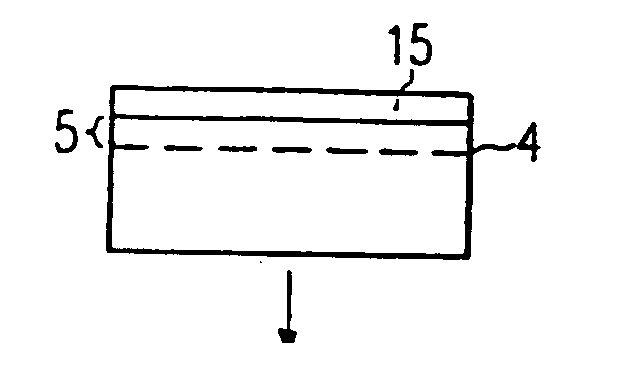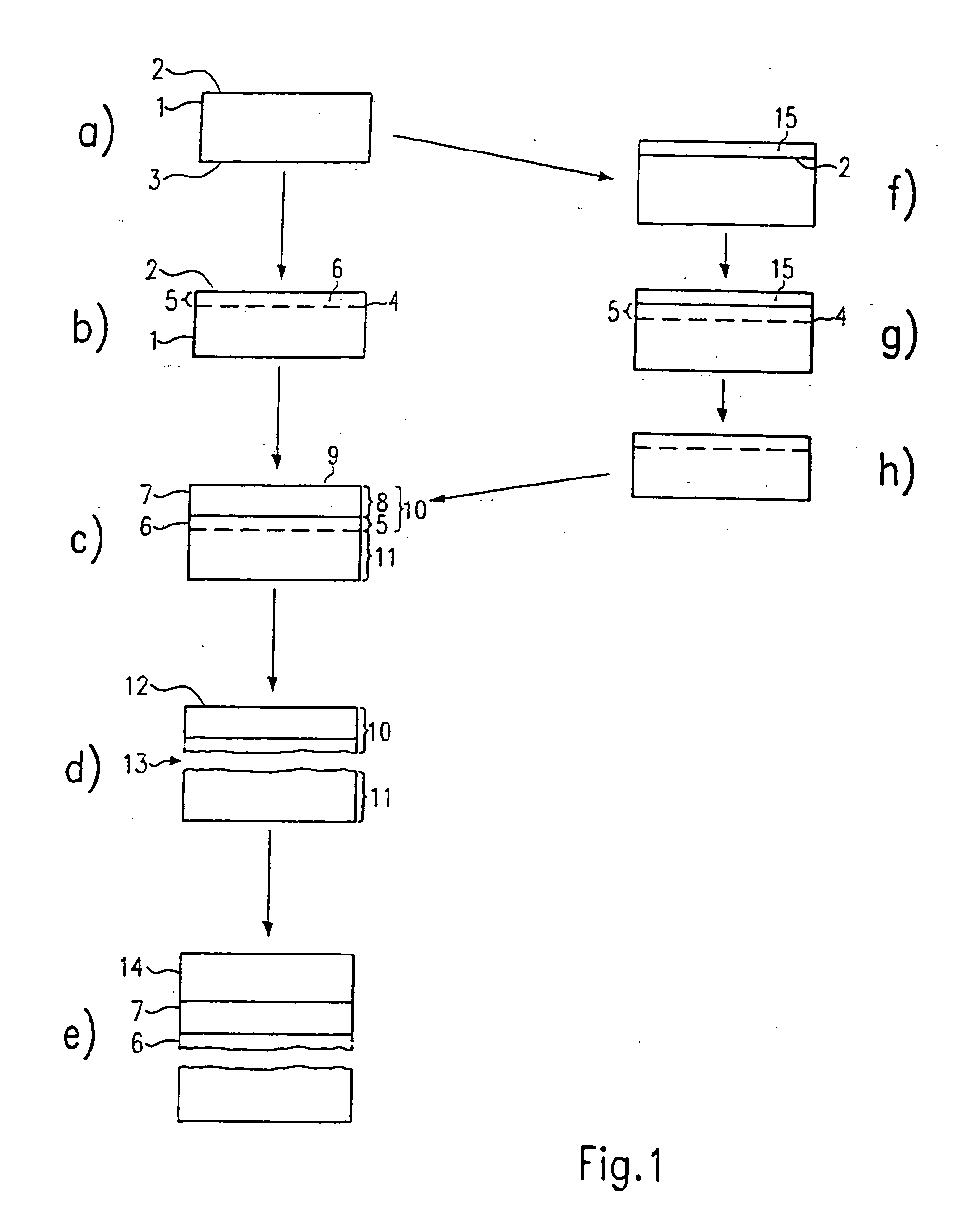Method for fabricating an epitaxial substrate
a substrate and epitaxial technology, applied in the direction of polycrystalline material growth, crystal growth process, chemically reactive gas, etc., can solve the problems of reducing the degree of ionization, introducing defects into the layer through which the ions travel, and minimizing undesirable properties, so as to achieve sufficient robustness
- Summary
- Abstract
- Description
- Claims
- Application Information
AI Technical Summary
Benefits of technology
Problems solved by technology
Method used
Image
Examples
Embodiment Construction
[0027] Processes for preparing an epitaxial substrate are described herein. In an embodiment, a crystalline base substrate is provided, a stiffening layer is grown on the face of the base substrate using thermal treatment in a first temperature range, and the stiffening layer is detached along with a sub-layer of the base layer by using a second thermal treatment in a second temperature range that is higher than the first temperature range. The resulting epitaxial substrate is suitable for growing high quality homoepitaxial or heteroepitaxial films thereon. The stiffening layer may be detached from the base layer along a zone of weakness created by implanting ions into the base substrate.
[0028] In a preferred embodiment, the stiffening layer is epitaxially grown and is made of the same material as the homo or heteroepitaxial layer to be grown in a subsequent fabricating step, such that the homo or heteroepitaxial layer grows in a homoepitaxial growth mode. This means that between t...
PUM
| Property | Measurement | Unit |
|---|---|---|
| thick | aaaaa | aaaaa |
| temperatures | aaaaa | aaaaa |
| temperatures | aaaaa | aaaaa |
Abstract
Description
Claims
Application Information
 Login to View More
Login to View More - R&D
- Intellectual Property
- Life Sciences
- Materials
- Tech Scout
- Unparalleled Data Quality
- Higher Quality Content
- 60% Fewer Hallucinations
Browse by: Latest US Patents, China's latest patents, Technical Efficacy Thesaurus, Application Domain, Technology Topic, Popular Technical Reports.
© 2025 PatSnap. All rights reserved.Legal|Privacy policy|Modern Slavery Act Transparency Statement|Sitemap|About US| Contact US: help@patsnap.com


